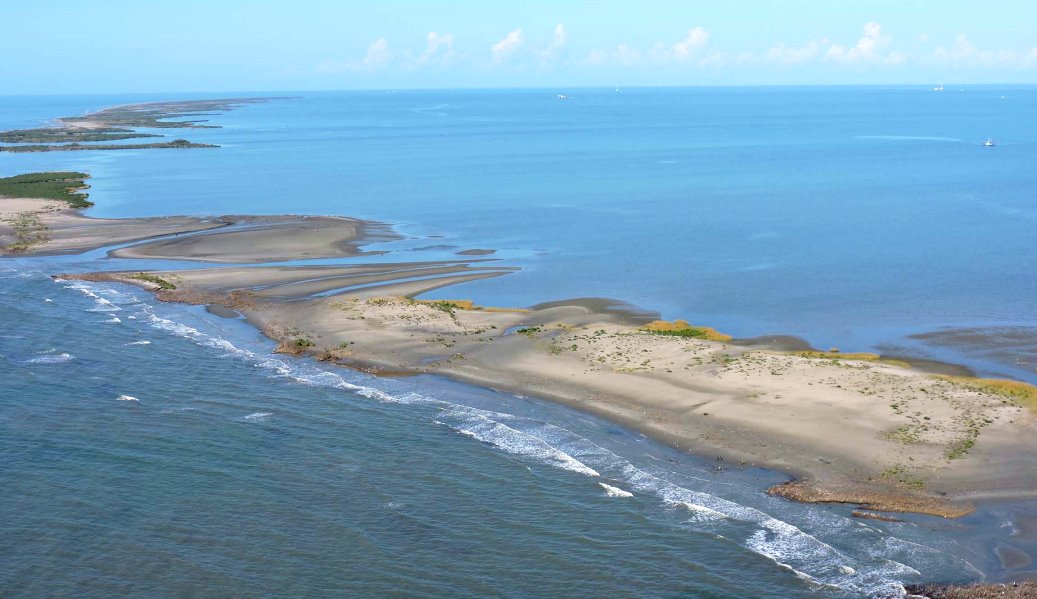The Louisiana Coastal Protection and Restoration Authority (CPRA) has announced completion of the $166 million Terrebonne Basin Barrier Island and Beach Nourishment project, the largest ecological restoration and island rebuilding by acreage completed by CPRA to date.
The project restored 1080 acres of barrier island habitat and 8.6 miles of beach in Terrebonne and Lafourche parishes.
“The newly completed Terrebonne Basin restoration project is a testament to the importance of our barrier islands as a first line of defense for communities,” said CPRA Chairman Chip Kline.
“Across our coast, we’re building up our barrier islands, restoring our marshes, and fortifying our hurricane protection systems to increase our defenses against strengthening and more frequent storms,” he added.
The project used funds from the Deepwater Horizon oil spill to restore 261 acres on Trinity-East Island, 252 acres on Timbalier Island, and 567 acres on West Belle Headland.
Project funding was administered through the National Fish and Wildlife Foundation (NFWF), along with $3 million in state funds.
“The Terrebonne Basin project is yet another step in the restoration of our entire barrier island chain,” said CPRA Executive Director Bren Haase.
“The project serves both protection and restoration functions while playing an integral role in the coastal program’s multiple lines of defense strategy,” he continued.
Terrebonne Parish President Gordy Dove and Lafourche Parish President Archie Chaisson joined in celebrating the completion of restoration efforts.
“The significance of Terrebonne’s Barrier Islands in terms of storm surge protection cannot be overemphasized,” said Dove.
“Without these crucial islands, mainland Terrebonne is at the mercy of hurricane and tropical event-induced storm surge and flooding. In addition, these important islands play a crucial role in protecting our coastal marshes from destruction. We in Terrebonne are most grateful to CPRA for recognizing the importance of our Barrier Islands and funding their restoration. We look forward to a long and productive association with this very important state agency,” he explained.
“Projects like these represent continued protection for our residents and infrastructure that make our communities places people can still live, work and play,” said Chaisson.
“As we saw last hurricane season, these barrier islands are a vital link in the chain and without them the effects of the storm would probably have been much different in Lafourche,” he added.
The project utilized over 8.8 million cubic yards of dredged sediment from Ship Shoal through a lease agreement with the Bureau of Ocean Energy Management (BOEM).
“BOEM values the coordination with our state partners and the Terrebonne Basin project is an example of the outstanding working relationships that have been developed over the course of many years,” said BOEM Gulf of Mexico Regional Director Michael Celata.
One of the restored barrier islands, Trinity-East Island, is part of the Isle Derniéres Wildlife Refuge, a once-popular resort island on Louisiana’s Southeast coast. The Last Island Hurricane of 1856 destroyed Isle Derniére, also known as “Last Island,” causing its eventual split into five individual islands including Wine, Trinity, East, Whiskey, and Raccoon.
“The restoration of these three critical barrier islands and headlands within the Terrebonne Basin barrier shoreline system will make a significant contribution to efforts to restore coastal habitats and protect biodiversity in Louisiana and throughout the Gulf,” said Jeff Trandahl, executive director and CEO of the National Fish and Wildlife Foundation.
“With support from the Gulf Environmental Benefit Fund, these projects will bolster efforts to protect this fragile landscape and continue to advance our goal of protecting and restoring species and habitats impacted by the 2010 Deepwater Horizon oil spill,” he concluded.
Photo courtesy of Stantec.
Learn more about the Terrebonne Basin Barrier Island and Beach Nourishment project.

